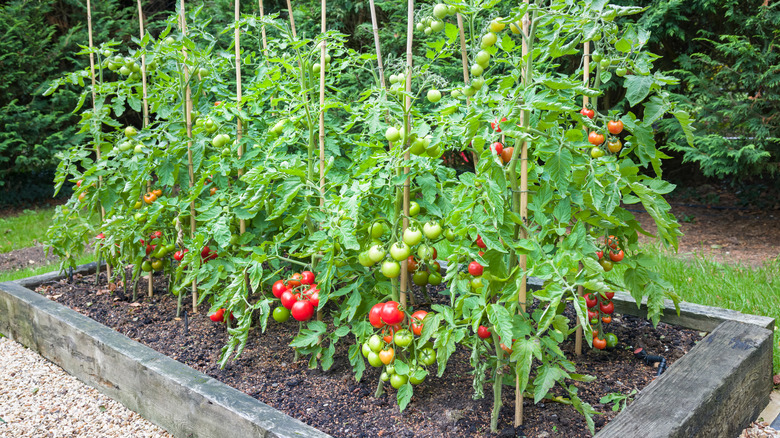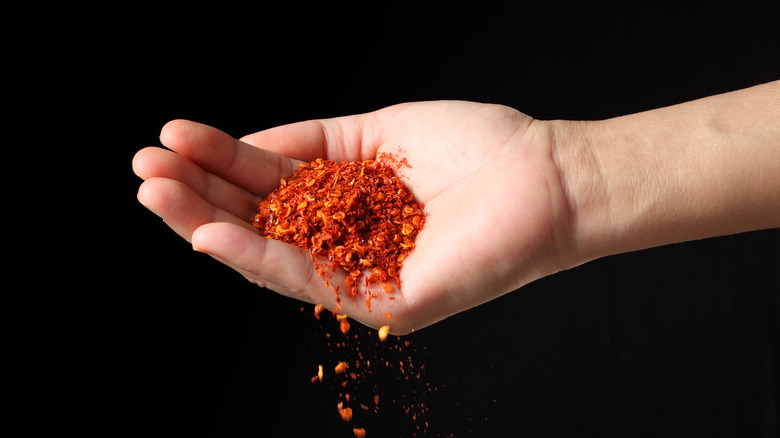How To Use Cayenne Pepper To Deal With Pests In Your Garden
When we think of pest repellents, few of us ever think of reaching into our kitchen cabinets to look for something that might be effective against the varmints that plunder our gardens in search of something good to eat. But as science tells us, our spice rack actually holds the secret to protecting our plants without having to resort to potentially toxic chemicals.
Like its spicy soul-mate Tabasco, nature pre-loaded cayenne pepper with a natural chemical known as capsaicin, which is officially registered with the government as an insect, rodent, and mite repellent. The use of capsaicin itself is not new; it has been listed as a biochemical pesticide since 1962 and can be purchased in commercial preparations that include liquids or granules, per the National Pesticide Information Center. Capsaicin's impact on animals has been researched, with studies reported by the Journal of Veterinary Behavior showing mammals have been known to stay away from food coated with capsaicin, whether it is fruit, seeds, or food pellets.
Insects and animals react badly to cayenne pepper
If cayenne pepper has that effect on the humans that love the spice and can't live without it, think about the impact it can have on the rodents that are naturally repelled by its strong scent and taste. Biotech Termite and Pest Control says the burning and itching that some of us can experience when we handle large amounts of cayenne pepper happens to other mammals, too, making the spice an effective deterrent against rodents like mice, squirrels, rabbits, and deer. But no matter how uncomfortable cayenne pepper might make animals, Biotech says the spice is not lethal and won't kill them.
Cayenne pepper doesn't just cause problems for mammals, the capsaicin makes the spice a problem for insects as well. The National Pesticide Information Center says the natural chemical is toxic to insects, including spider mites, lace bugs, bees, and yellow jackets, because it can disrupt a number of the insects' neurological functions. Scientific Reports says common fruit flies are even discouraged from laying eggs where capsaicin has been laid out.
Cayenne pepper can be used in different ways
Given cayenne pepper's impact on garden pests of different sizes and species, sites like Stonyfield Organic have thrown their weight behind cayenne pepper as an effective organic pest control agent. The site advises gardeners to sprinkle a quarter cup of the spice around the garden to keep the unwanted company at bay and to repeat the process every few days since the spice can be washed away by rain or carried off by the wind.
If you want to make your own cayenne pepper spray repellent at home, Pest Pointers recommends using 2 tablespoons of cayenne pepper and a few drops of dishwashing liquid in 1 gallon of water. Let the mixture stand overnight and then decant it into a spray bottle the following day before using. Fresh peppers can even be used for a spray if you chop them up and add them to 4 cups of water and a few drops of dish soap. But the site also warns that the repellent is not a permanent fix and pests like mice can return.
Remember to use cayenne pepper with care if you have pets and children and to avoid touching your eyes after handling the spice. Even if you've washed your hands, Mount Sinai warns, water doesn't really do much to break up cayenne pepper.


